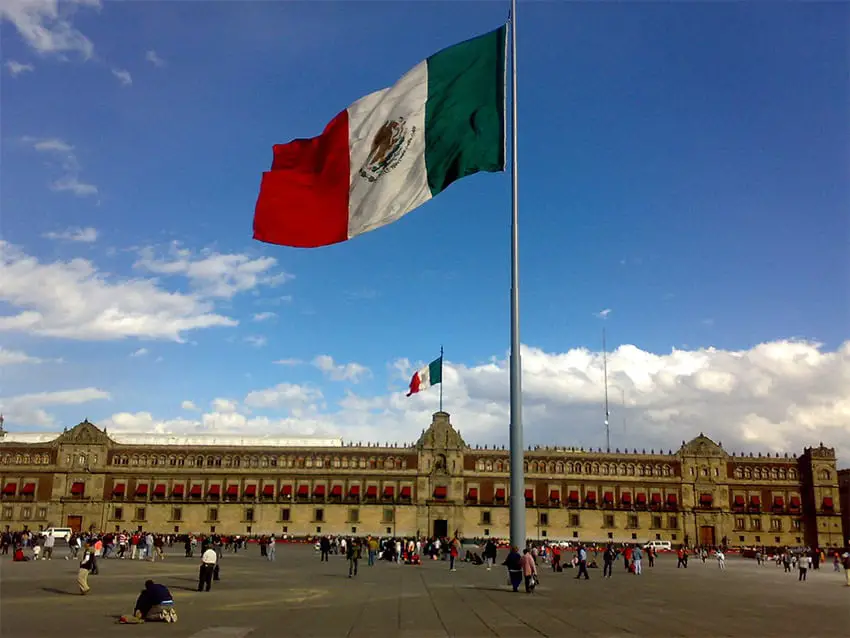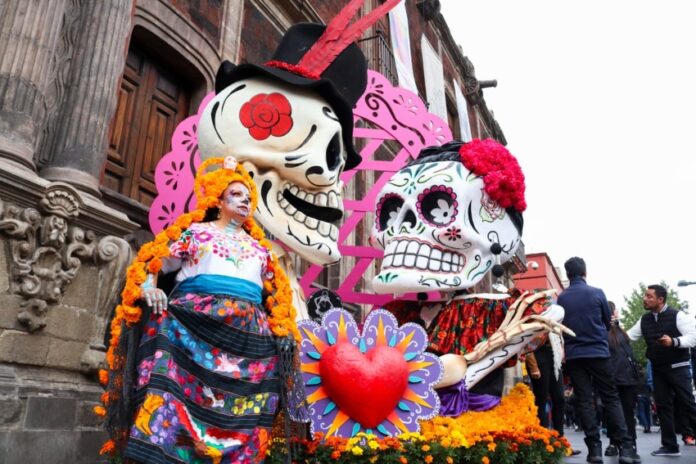Brands and businesses operating in international markets use a series of frameworks to help them understand different countries. In particular, to understand how to successfully develop products, implement marketing initiatives and brand messaging that resonates with their intended audiences. It’s not just a matter of translation. No two markets are alike, and, for example, an ad that is wildly successful in Sweden might be completely off-putting in South Korea. It makes sense. Based on societal conditioning, priorities, shared values and history, the things people care about differ across different geographies.
The Six Dimensions of National Culture
Geert Hofstede’s “Six Dimensions of National Culture” is one of the prevalent models used to understand cultural differences across countries.

The model classifies cultures according to six different key dimensions: the level of power distance (hierarchical society structure), individualism versus collectivism, masculinity versus femininity, the level of uncertainty avoidance, long-term versus short-term orientation (i.e., future planning), and indulgence versus restraint.
While Hofstede originally studied the influence of these values in the workplace, researcher Marieke De Mooij expanded upon Hofstede’s research by applying the dimensions to understand consumer behavior and decision-making in different cultural contexts, which helps to develop branding strategy and communications. Both angles give us an interesting view into a country’s culture and its people as a whole. Let’s see where Mexico sits in these dimensions.
Responses and what they tell us about Mexico and its people
By examining Mexico through Geert Hofstede’s cultural dimensions theory, we can gain valuable insights into what drives Mexican society and how cultural values influence everything from family dynamics to business practices.
-
Power Distance (PDI)
The correct answer is (A).
Mexico scores high on Power Distance compared to many other countries. Perhaps unsurprisingly, this means that power is distributed unequally across society, with hierarchies based on class, social status and even age being widely accepted. In Mexico, this translates into a culture where authority is respected, and subordinates often follow instructions without question. Unlike more egalitarian countries such as Denmark or Sweden, Mexico is more class-conscious, with clear divisions in wealth and social standing.

Age and family hierarchies also play an important role, as deference to parents and elders is seen as a sign of respect. In Mexico, gender inequality further reinforces these imbalances. Importantly, this way of being is not actually imposed from above, but rather accepted as a cultural norm. In workplaces or family settings, decisions are often made top-down, and disagreements with the boss, professor or parent openly are less common than in low PDI countries like Sweden. In verbal cases, this manifests itself through the use of the formal “usted” with elders, authority figures or strangers to show respect.
-
Individualism vs. Collectivism
The correct answer is (B).
Mexico scores low in Individualism, leaning strongly toward Collectivism. People in collectivistic cultures are ‘‘we-focused,” seeing themselves as part of a family or community first, and as individuals second. Family bonds are central, loyalty runs deep, group goals trump personal ones and community ties shape much of daily life. This shows up in many ways. Advertising, for example, often portrays people in group settings, sharing experiences, rather than individuals pursuing their own path. The American-style “Be all you can be” message of self-actualization doesn’t land as strongly here. Instead, what resonates is togetherness, belonging and interpersonal connection.
Interestingly (and often frustratingly), collectivist cultures tend to see punctuality as a low priority (De Mooij, 2010). That’s one reason why punctuality is often more flexible, and last-minute changes of plans are common. Many of us with wonderful, albeit always late, Mexican friends know this well. It’s also worth noting that Mexico does score slightly higher on Individualism than most of its Latin American neighbors. So while collectivist values dominate, there’s also room for personal ambition and independence to shine through.
-
Masculinity vs. Femininity
The correct answer is (A).

Mexico scores relatively high on Hofstede’s Masculinity dimension — sometimes more diplomatically called the “Tough Versus Tender Index” — highlighting a cultural proclivity towards traits like competition, achievement and success-driven behavior. In masculine societies like Mexico, being a “winner,” showing visible signs of success (think: flashy possessions) and displaying strength are admired traits, while feminine societies place more emphasis on cooperation, modesty, quality of life and caring for the vulnerable.
According to Hofstede, masculinity (MAS) also reflects the extent to which societies reinforce traditional male work roles tied to achievement, control and power. A high MAS score reflects the greater gender differentiation and dominance of men in leadership and decision-making roles, while low MAS societies (“feminine”) move toward equality, collaboration and healthy work-life balance. Mexico’s MAS score of 69 places it close to Germany and gives it the second-highest masculinity ranking in Latin America, just below Venezuela. Advertising in Mexico often reflects this orientation as well, highlighting status brands, strength and aspirational imagery to connect with consumers. By contrast, more feminine societies such as Switzerland emphasize cooperation, harmony and interpersonal relationships over material achievement.
-
Long-Term vs. Short-Term Orientation
The correct answer is (B).
Mexico’s outlook is firmly rooted in the present. Mexico scores low on Hofstede’s Long-Term Orientation dimension, meaning it’s more of a short-term oriented (or “normative”) culture. This often refers to activities like saving money and resources for the future. Short-term oriented cultures have a strong affinity toward the past, while long-term oriented societies, such as Japan or Germany, emphasize perseverance, thrift, future rewards and adapting traditions to fit modern contexts. By contrast, short-term-oriented cultures like Mexico place greater value on respecting traditions, fulfilling social obligations and focusing on the present or past rather than planning for distant goals.
With a score of 24, Mexico shows a clear emphasis on maintaining cultural heritage and celebrating traditions (think: Día de los Muertos), reflecting pride in national identity and continuity. In these societies, people often prefer quick results, personal stability and the pursuit of happiness over saving or sacrificing for the future. Many people view luck and fate as having a greater impact on success or failure than long-term effort or perseverance. This orientation appears in consumer behavior, where instant gratification, status consumption, and enjoyment of the present are more appealing than messages about delayed rewards or future planning.
-
Uncertainty Avoidance

The correct answer is (B).
Hofstede’s measurements show us that most Mexicans are not risk-takers. Mexico ranks very highly on Hofstede’s Uncertainty Avoidance Index (UAI), with a score of 82. This means a strong preference towards stability, structure and predictability over ambiguity or change. In high uncertainty avoidance cultures like Mexico, people cope with the unknown by relying on strict rules, formal procedures and established traditions that provide a sense of security.
By contrast, low uncertainty avoidance cultures such as those in Scandinavia are more comfortable with flexibility and taking risks, even in the face of uncertainty. In the Mexican context, this shapes everything from business practices and workplace hierarchies to social norms and daily routines. While this preference for certainty fosters reliability and order, it can also create resistance to change and experimentation.
-
Indulgence vs. Restraint
The correct answer is (A).
Let’s be honest. We love Mexico for all of its indulgences. The incredible food, the wonderful people, the gorgeous landscapes … Therefore, it comes as no surprise that Mexico scores the highest of all countries measured in Indulgence. In Hofstede’s terms, indulgence reflects the degree to which a society allows free gratification of desires and the enjoyment of life, while restraint emphasizes strict social norms and limited gratification.
With a score of 97, second-highest in the world, Mexico clearly leans toward indulgence, celebrating leisure, optimism and happiness as central cultural values. By contrast, Germany’s score of 40 places it closer to the restrained side of the spectrum, favoring moderation and greater control over emotional expression. This stark difference highlights how Mexicans tend to embrace joy and spontaneity, while Germans approach life with more restraint and discipline.
Tell us in the comments: How did you score? Did you agree with the measurements? Which, if any, surprised you?
Monica Belot is a writer, researcher, strategist and adjunct professor at Parsons School of Design in New York City, where she teaches in the Strategic Design & Management Program. Splitting her time between NYC and Mexico City, where she resides with her naughty silver Labrador puppy, Atlas, Monica writes about topics spanning everything from the human experience to travel and design research. Follow her varied scribbles on Medium at medium.com/@monicabelot.
